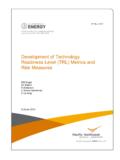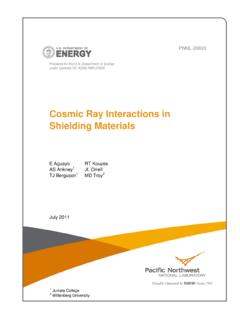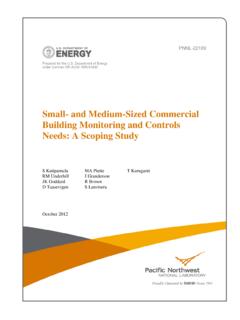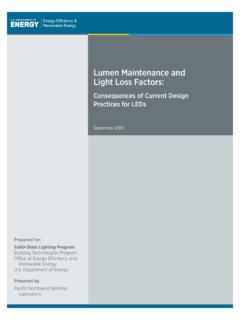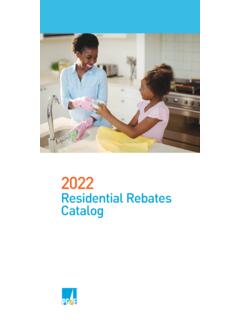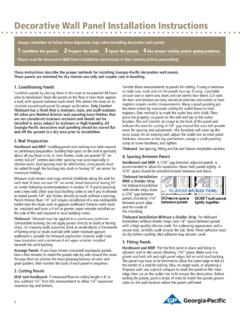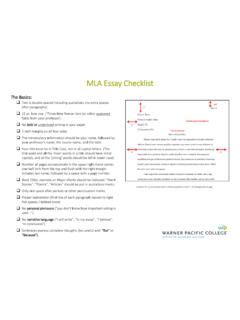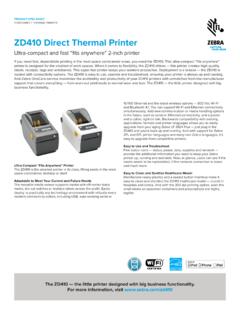Transcription of A Guide to Energy Audits - Pacific Northwest National ...
1 BUILDING TECHNOLOGIES PROGRAMA Guide to Energy AuditsSeptember 25, 2011 PNNL-20956 Building Technologies ProgramA Guide to Energy AuditsPrepared byPacific Northwest National LaboratoryMichael Baechler Portland Energy Conservation, Strecker, PE and Jennifer ShaferSeptember 25, 2011 Prepared for Department of Energy under Contract DE-AC05-76RL01830 PNNL-20956 Pacific Northwest National LaboratoryRichland, Washington 99352 This report was prepared as an account of work sponsored by an agency of the united states government. neither the united states government nor any agency thereof, nor Battelle memorial institute, nor any of their employees, makes any warranty, express or implied, or assumes any legal liability or responsibility for the accuracy, com-pleteness, or usefulness of any information, apparatus, product, or process disclosed, or represents that its use would not infringe privately owned rights.
2 Reference herein to any specific commercial product, process, or service by trade name, trademark, manu-facturer, or otherwise does not necessarily constitute or imply its endorsement, rec-ommendation, or favoring by the united states government or any agency thereof, or Battelle memorial institute. The views and opinions of authors expressed herein do not necessarily state or reflect those of the united states government or any agency thereof. iContentsA Guide to Energy Audits ..1 What Is an Energy audit ? ..2 Types of Energy Audits ..2 Levels of Energy Audits ..2 Portfolio Analysis ..3 Funding an Energy audit ..3 The Energy audit Process.
3 4 Preliminary review of utility data ..5 The Site Assessment ..5 Data Analysis ..6 audit Report ..7 Hiring an Energy Auditor ..9 Identifying Potential for Qualifications and Requests for Proposals ..9 Contracting an Auditor ..10 Appendix A .. Guide to Energy Audits : .. for Qualifications .. B .. Guide to Energy Audits : .. for Qualifications .. audit to Identify Energy Efficiency Projects .. C .. Guide to Energy Audits : .. audit Agreement .. Guide TO Energy Audits 1A Guide to Energy Audits Energy Audits are a powerful tool for uncovering operational and equipment improvements that will save Energy , reduce Energy costs, and lead to higher performance.
4 Energy Audits can be done as a stand-alone effort but may be conducted as part of a larger analysis across a group of facilities, or across an owner s entire portfolio. Simple Energy Audits equip building owners with a list of no-cost or low-cost recommendations and a general road map for future planning. Many of these recommendations are easily implemented by operations and maintenance staff, and Energy savings are seen almost immediately. Resulting cost savings can then be put toward future Energy efficiency complex Energy Audits provide a comprehensive Energy efficiency capital in-vestment plan in line with a building owner s financial goals.
5 This type of rigorous Energy audit is typically part of a larger Energy management program, and may include partnering with an Energy services company to fully realize Energy savings opportunities. Whether you are looking for simple retrofits or a long-term investment project, an Energy audit is the first step toward reducing Energy use and improving the performance of facilities in your portfolio. This Guide provides an overview of the Energy audit process, including an overview of the different Energy audit options available and information on how to select an Energy auditor. Energy Audits IDENTIfy: No-cost operational or maintenance adjustments that will save Energy Short-term, low-cost Energy efficiency retrofit recommendations Action plans for Energy efficiency capital investments Comfort and code issues that can be addressed immediately Opportunities for better adherence to lighting and comfort standardsA convention center in a major metropolitan city reduced Energy costs by almost $80,000 annually by implementing Energy efficient changes to equipment, controls and systems.
6 Payback for these changes was less than a year, and facility staff predict an additional savings of $174,000 annually if longer-term equipment replacements are Guide TO Energy AUDITS2 What Is an Energy audit ? The purpose of an Energy audit (sometimes called an Energy assessment or Energy study ) is to determine where, when, why and how Energy is used in a facil-ity, and to identify opportunities to improve efficiency. Energy auditing services are offered by Energy services companies (ESCOs), Energy consultants and engineering firms. The Energy auditor leads the audit process but works closely with building owners, staff and other key participants throughout to ensure accuracy of data collection and appropriateness of Energy efficiency recommendation.
7 The audit typically begins with a review of historical and current utility data and benchmarking of your building s Energy use against similar buildings. This sets the stage for an onsite inspection of the physical building. The main outcome of an Energy audit is a list of recommended Energy efficiency measures (EEMs), their as-sociated Energy savings potential, and an assessment of whether EEM installation costs are a good financial of Energy AuditsEnergy Audits typically take a whole building approach by examining the building envelope, building systems, operations and maintenance procedures, and building schedules. Whole building Audits provide the most accurate picture of Energy sav-ings opportunities at your facility.
8 Alternately, Energy Audits can be targeted to specific systems ( , lighting or heat-ing, ventilation and air conditioning). Targeted Audits may miss significant bigger-picture Energy savings opportunities, but may be a good route if you have specific Energy efficiency retrofit projects in mind and limited funds to invest. Levels of Energy AuditsThe American Society of Heating, Refrigerating and Air-Conditioning Engineers (ASHRAE)2 defines three levels of Audits . Each audit level builds on the previous level. As audit complexity increases, so does thoroughness of the site assessment, the amount of data collected and the detail provided in the final audit report.
9 This effort can translate into higher Energy savings. Level I: Site Assessment or Preliminary Audits identify no-cost and low-cost en-ergy saving opportunities, and a general view of potential capital improvements. Activities include an assessment of Energy bills and a brief site inspection of your building. Level II: Energy Survey and Engineering Analysis Audits identify no-cost and low-cost opportunities, and also provide EEM recommendations in line with your financial plans and potential capital-intensive Energy savings opportunities. Level II Audits include an in-depth analysis of Energy costs, Energy usage and building characteristics and a more refined survey of how Energy is used in your building.
10 Level III: Detailed Analysis of Capital-Intensive Modification Audits (sometimes referred to as an investment grade audit ) provide solid recommendations and financial analysis for major capital investments. In addition to Level I and Level II activities, Level III Audits include monitoring, data collection and engineering analysis. The Energy auditor you select will work with you to understand your project goals and available budget, and help you determine which level of audit you need. For smaller facilities where there is no major capital improvement plan or budget, a Level I audit could yield results that make the cost of the audit worthwhile.




